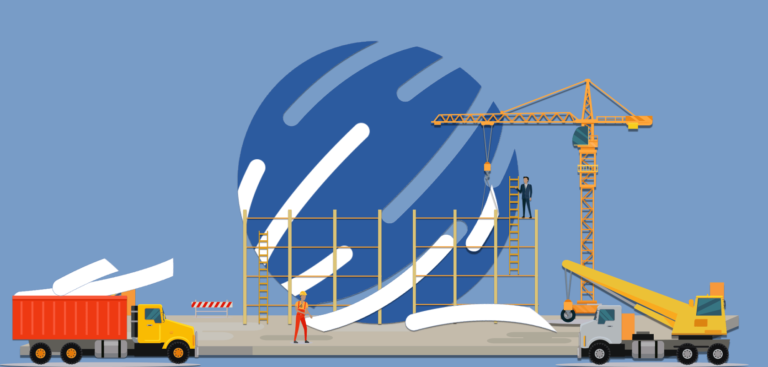E-Commerce, Last Mile Delivery Optimization, Route Optimization
Logistics Cost Optimization: How can technology curb it?
May 17, 2019
4 mins read

Why are logistics costs so high in Southeast Asia?
The US spends 3.5% of its GDP on defence. India spends about 2.7% of its GDP on education.
A substantial amount of money on sectors that directly affect the well being of society.
Now imagine a country spending 24% of its GDP on logistics!
Yup, Indonesia does that. Not only Indonesia, but South East Asian (SEA) countries like Vietnam, Thailand, and Myanmar all perform miserably, when it comes to logistics costs. Check the table below: (Credit: seasia)
The Logistics Performance Index is an interactive benchmarking tool created to help countries identify the challenges and opportunities they face in their performance in trade logistics. So, Singapore with an LPI of 4.14 is a much ‘friendlier’ country for the logistics industry as compared to Myanmar which has a score of 2.46 and thus presents a more challenging environment for the logistics sector.
Logistics Challenges in Southeast Asia
The reasons for the high logistics costs in the region are multifold. Even though the SEA market provides excellent growth potential owing to an unsaturated market, the still-developing economy brings its own set of challenges. The different maturity levels of development mean that organizations would need to utilize different supply chain strategies to adhere to the different standards prevalent in the individual markets.
Unique Geography
17,000 remote islands in Indonesia and 7,000 islands in the Philippines make it one of the most complex geographies to operate in. Lack of infrastructure only adds to the logistics costs in the region.
For example, scant paved roads in Indonesia means that the trucks traveling between West Java and the port of Jakarta can now only do one roundtrip per day, as opposed to the two roundtrips 5 years ago.
Densely populated cities like Jakarta have a lot of traffic congestion, which makes last-mile delivery challenging. Domestic ports don’t work well due to the small handling capacity. In the international ports, the high cost and uncertainty in dwelling time are the main issues.
Changing Customer Expectations
Another reason for the increase in logistics costs is the exponential growth of e-commerce companies in the region. With the competition increasing, organizations are using logistics as the key differentiating factor. The rising customer expectations mean that same day deliveries are becoming the norm, and the industry is shifting towards time-defined deliveries for customers. To achieve such high efficiency in their operations, organizations are shelling out big bucks.
Transportation Complexities
Substandard transportation also adds to the increasing logistics costs accounting for 60% of the operational costs. The complex transportation network of roadways and ferries create a novel challenge for logistics decision-makers. Transportation management decisions in the region consist of the type of transportation, the provider of transportation services, and the options in service levels provided. Considerations are made not only based on transportation costs, but also based on the quality of service performance. The accuracy of the delivery of goods helps the company to reduce inventory, storage costs, and material handling.
How Locus automated logistics operations for Indonesia’s leading E-commerce player? Download WhitePaper!
AI To The Rescue
With so much complexity and so many permutations, handling cost-affecting logistics challenges becomes impossible for the human mind. This is where Artificial Intelligence (AI) comes into the picture for logistics cost optimization. With systems that use deep learning and advanced algorithms to incorporate various business rules & fuzzy real-world scenarios, AI-enabled solutions are optimizing supply chains of virtually every industry to cut logistics cost and save precious time.
Logistics Cost Optimization – How Locus Helps?
Locus is a supply chain decision-making engine that uses deep learning and proprietary algorithms. We automate every mile of the supply chain and cut down logistics costs.
Locus’ Dispatcher provides AI-based automated route planning software by considering multiple real-life constraints and distribution models. With features like clubbing of forward and reverse logistics, schedule & on-demand dispatch planning, and real-time fleet tracking with intelligent alerts.
Locus is solving complex logistics decision-making problems for some of the biggest brands in Southeast Asia. To know more, get in touch with us.
Reference:

Watch Webinar on “How to Optimimize Logistics Costs”:
Related Tags:

Blog
Only The Paranoid Survive
The message from Andrew Grove, founder of Intel, has been my watchword for Locus. Locus was never meant to be a good company, not even a great one. Locus was intended to be perfect, which means that in this drive for perfection, we often forget to rejoice our achievements. Today as we secure 22M USD […]
Read more
Route Optimization
Route Constraints: Locus Going the Extra Mile for Customers with Autoscaling
Graceful Scaling of Queue Workers: Locus uses Amazon Autoscaling to build a route optimization platform that can scale on-demand and helps in adapting to new last-mile challenges. Locus Route Planner Behind Scenes: One of the most utilized products of Locus’ best route planning software (Dispatcher), is used to solve the constrained vehicle routing problem. The constrained […]
Read moreMOST POPULAR
EDITOR’S PICKS
SUBSCRIBE TO OUR NEWSLETTER
Stay up to date with the latest marketing, sales, and service tips and news


Logistics Cost Optimization: How can technology curb it?